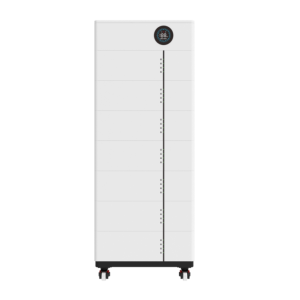目录
ToggleAs home and business owners seek alternative power, one stands above all, known as solar power which is empowered by stackable solar batteries.
Stackable batteries help in collecting and storing excess energy that is generated by the solar panels, these batteries have taken on the challenge of storing excess energy during and after the sun stops shining.
This has helped home and business owners to have excessive energy storage, and users can decide to expand their energy capacity when they need it.

The Uses of the Stackable Batteries
- Independence – This energy type provides independence, where you don’t need to rely on a national grid, but the energy is stored by the batteries.
- The Off-Grid Abode – With this energy, you don’t need to worry about staying in the megacities because these stackable batteries have got you covered.
- Business Operations – For businesses that are committed to growth, harnessing energy efficiency, reduction of carbon footprint, and renewable energy commitment, and finally enhancing their brand name, this energy source is all they need.
- Electric Vehicles – On the issue of electric vehicles, stackable batteries have taken the hassle of charging the electric vehicles for a smooth ride and also provide eco-friendly environments.
The benefits of stackable solar batteries
- Cost Savings – Users can reduce or not rely on grid electricity for power, which will result in lower electric bills or no bills at all because of the excessive energy storage.
- Energy Security – This is an uninterrupted power source. With these batteries, there’s full assurance that you will have power for a longer period than the outages suffer from the national grid.
- Scaling – You can start with a single unit and further increase it by adding more batteries as you want.
Types of Stackable Batteries
- Lithium-ion Batteries – This has high energy efficiency with a longer life span and is easier to stack up with a long span of five years, making it durable for long-term storage.
- Lead-Acid Batteries – This is more affordable but has a shorter life span and lower lithium-ion, and it’s best suited for small operations.
- Flow Batteries – The battery offers unlimited energy storage that uses liquid electrolytes stored in external tanks, but it’s good for large or commercial energy usage.
- Nickel-Cadmium Batteries – Known for its long lifespan and the ability to function in extreme temperatures, it has low maintenance features and is higher in price.
- Saltwater Batteries – Made from non-toxic materials, it offer a safer, friendlier environment for usage and is best for users who are concerned about environmental impact.
Conclusion
Stackable solar batteries will continue to transform our lives. For our independence, these systems are powerful tools that help with sustainable energy solutions for all, and as the demands for this solar energy continue to grow, stackable batteries will continue to cushion the hard effects of the people, providing power and creating a greener, fossil-free future.
0